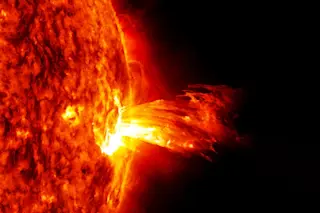Stars like our sun can turn into crystals in the final stages of their lives, bringing a whole new meaning to those glittering jewels in the sky. Astronomers from the University of Warwick say they’ve found the first direct evidence that white dwarf stars – the dense, stellar corpses of stars like our sun – can crystallize, or turn from a liquid into a solid. The discovery was published Wednesday in the journal Nature.
Astronomers had long suspected such crystallization was possible. But to find direct evidence, the team turned to data gathered by the European Space Agency’s Gaia satellite and analyzed some 15,000 white dwarf candidates. In the process, they uncovered a “pile-up” of stars with colors and luminosities that matched those predicted for crystallized white dwarfs.
The discovery, led by physicist Pier-Emmanuel Tremblay, was announced exactly 50 years after it was first predicted.
“All white dwarfs will crystallize ...














